Water safety tips for pets
20th August, 2020
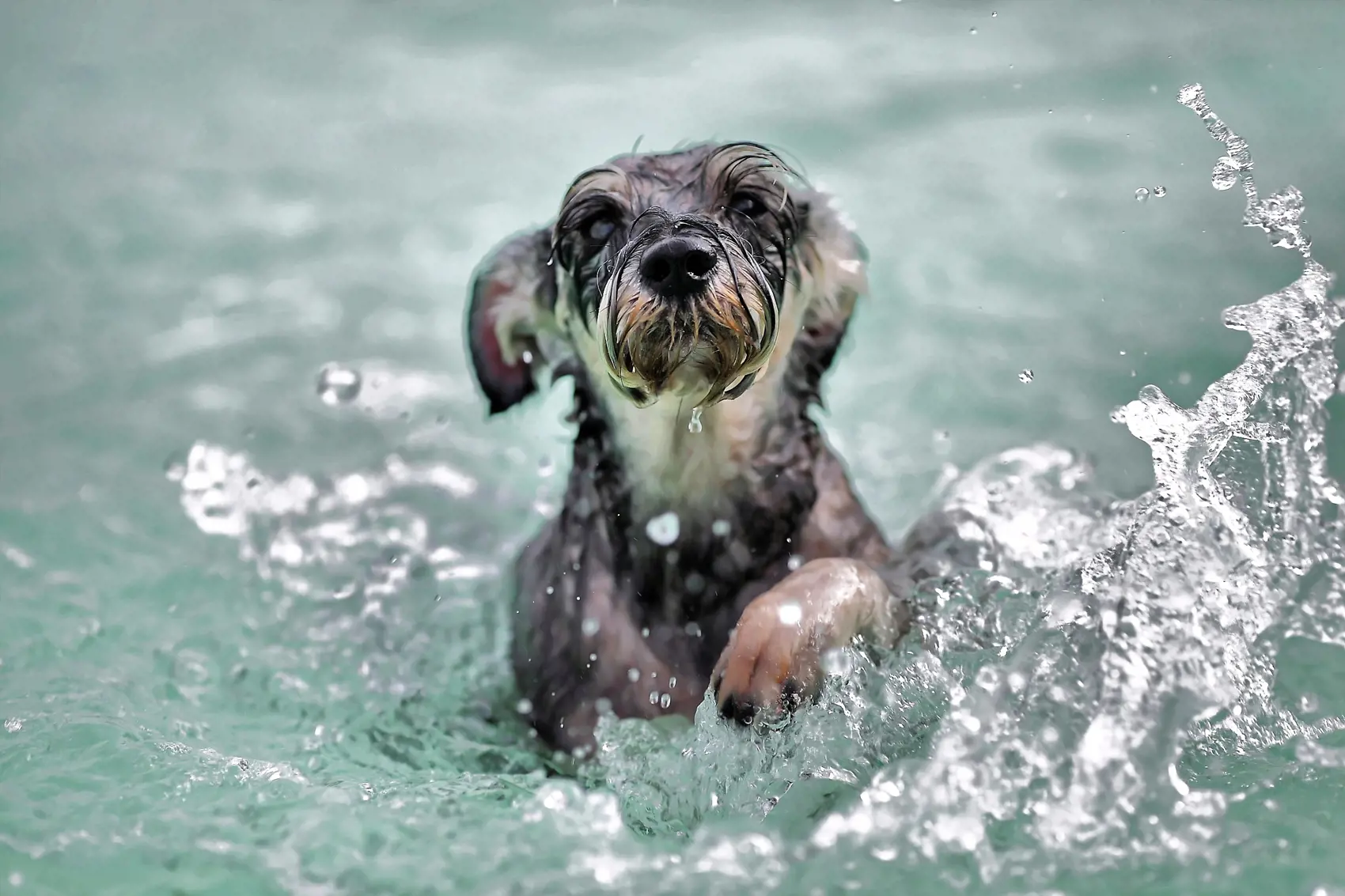
Humans may think twice about jumping into a muddy river, but the same can’t be said for our pets. Whether it’s the sea, a lake, a fountain or a puddle, many dogs can’t seem to help themselves from launching themselves into the water for a good old splash around.
And there are plenty of positives to your four-legged friend being in the water. Swimming helps them cool off in hot weather, strengthens their muscles, heart and lungs, and can ease painful or stiff joints.
However, it’s important to be careful when your pet is near any expanse of water.
Pools, reservoirs and rivers might look inviting to your pup, but they also come with an element of danger. Which is just one reason why getting insurance for your pet is such a good idea.
Here’s our guide to keeping your pet safe when they are in and around water.
Does your pet like the water?
The first question to ask yourself when thinking about water safety for pets is: does my pet actually like water? Remember that not all pets can (or want) to swim.
This is especially important if your pet is young or relatively new to you.
There are plenty of dogs that take to water like, erm, a dog to water. But there are also lots of pooches who are afraid of water, panic when they are in or near water, or get themselves into dangerous situations easily.
Toy breeds are generally less convinced about being in water, while dogs with thick bodies, short legs, short tails, or short snouts tend to be poor swimmers.
Of course, there are going to be exceptions to this rule, and all dogs are individual, so keep an eye on your pet whenever you are out and about.
The most obvious signs that your pet doesn’t like water are that they have no interest in it or their legs start trembling at the sight of it.
Another scenario is that your dog shows an interest in water but quickly proves to be a terrible swimmer.
If you have any concerns or doubts about your pet being close to water, they will need constant supervision.
Even if your pet is a strong swimmer, you should never leave them unsupervised in water.
Some dogs would happily stay in the water all day given the chance, but should be encouraged to take breaks to avoid overexertion. Just got a new pet? Make sure you have the right pet insurance to protect it.
Never force your pet into the water, and if they look anxious or scared when they are near water, plan your walking routes so you steer clear of rivers, streams or reservoirs.
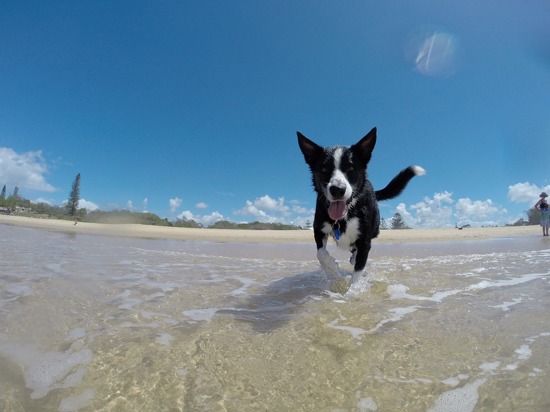
Do you need to teach your dog to swim?
It’s easy to assume that swimming comes naturally to all dogs – and for many this is the case.
However, as we’ve established, not all dogs are water babies. Even if your pup is raring to get into the water, first they need to learn how to swim.
If you have a young dog or a dog that is not used to the water (but is showing lots of interest), here are some tips on how to teach them to love the water:
-
Start slow and stay in shallow water to begin with
-
Use your dog’s favourite toy or treats as a way to make splashing around in the water lots of fun
-
When your dog looks confident in the water, encourage them to go a bit deeper so they can try a spot of doggy paddle
-
Support them under their stomach so they can get used to kicking with all four legs at the same time
-
Try not to stay in the water too long at first. Increase the length of time your dog stays in the water every time you visit
-
Always stay near your dog when they are in the water – even once they have become a strong, confident swimmer as they might get tired and need your help
Look at your surroundings
Some places are much safer to swim than others. It’s always worth checking an area if you’re visiting it for the first time. If there are ‘no swimming’ signs, remember they apply to your dog as well as you.
Any water that smells bad or is likely to contain farm waste or other contaminants is best avoided.
Be mindful that there could be potential hazards in the water, such as broken glass, fishing hooks or sharp rocks. Try to check the shoreline and shallows before your dog takes the plunge.
If you and your dog enjoy a walk and play on the beach, it’s good to stay alert to your surroundings. Water conditions can vary and strong currents, tides and waves can all create an unsafe environment for your pet.
The local wildlife can also pose a risk. Jellyfish or other toxic sea creatures washed up onto the beach (either dead or alive) can cause sickness in pets.
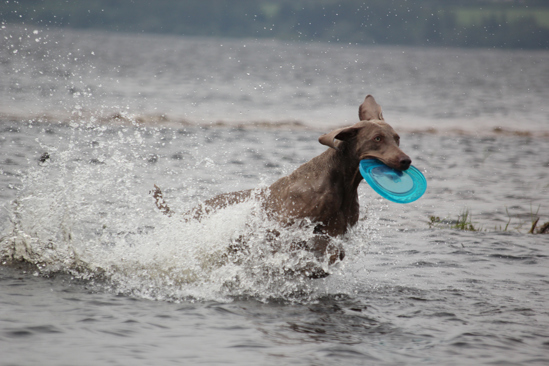
Choosing the right swimming spot
When choosing a good place for your dog to swim, there are certain things to look out for.
Lakes are often a good option, with plenty of calm water and shallow areas.
Make sure there are no big branches or other people using the lake (for example, boats, windsurfs or jet skis). If a lake has a designated swimming area, make sure dogs are allowed, too.
As long as they are dog-friendly, beaches are also a good option for dogs.
Make sure the water conditions are safe and don’t let your dog go in if there are warning flags or large waves.
Some beaches may also be out of bounds to dogs at certain times of the year.
If your dog is keen to swim in a river, make sure you find a place they can exit easily. Jumping in from a steep bank is simple enough, the danger is if there is no obvious way of getting back out again.
And if you are near a river, make sure your dog’s recall is good – you want them to get out on your side of the river, not the other bank!
A paddling pool in the back garden is an effective (and safe) way to help your dog cool down on a hot day.
Even if the water is fairly shallow, never leave your dog unattended in the paddling pool, just in case.
Spots to avoid when swimming
There are some bodies of water that it’s best to avoid if your dog loves to swim.
Canals are one of those places.
The water is often stagnant and there can be discarded items and debris under the water.
Reservoirs can also be dangerous places to swim. They might look tempting, but they often have strong currents and hidden objects lurking beneath the surface.
Another consideration is that the water can be very cold (as reservoirs tend to be very deep) which can send your dog’s body into shock.
Water that is fast-flowing or flooded is also not a good swimming option because currents or hidden debris can cause problems.
And finally, if you’re on the beach and the sea is looking rough or the red flag is flying, steer clear. If you wouldn’t go into the water, your dog shouldn’t go in either.
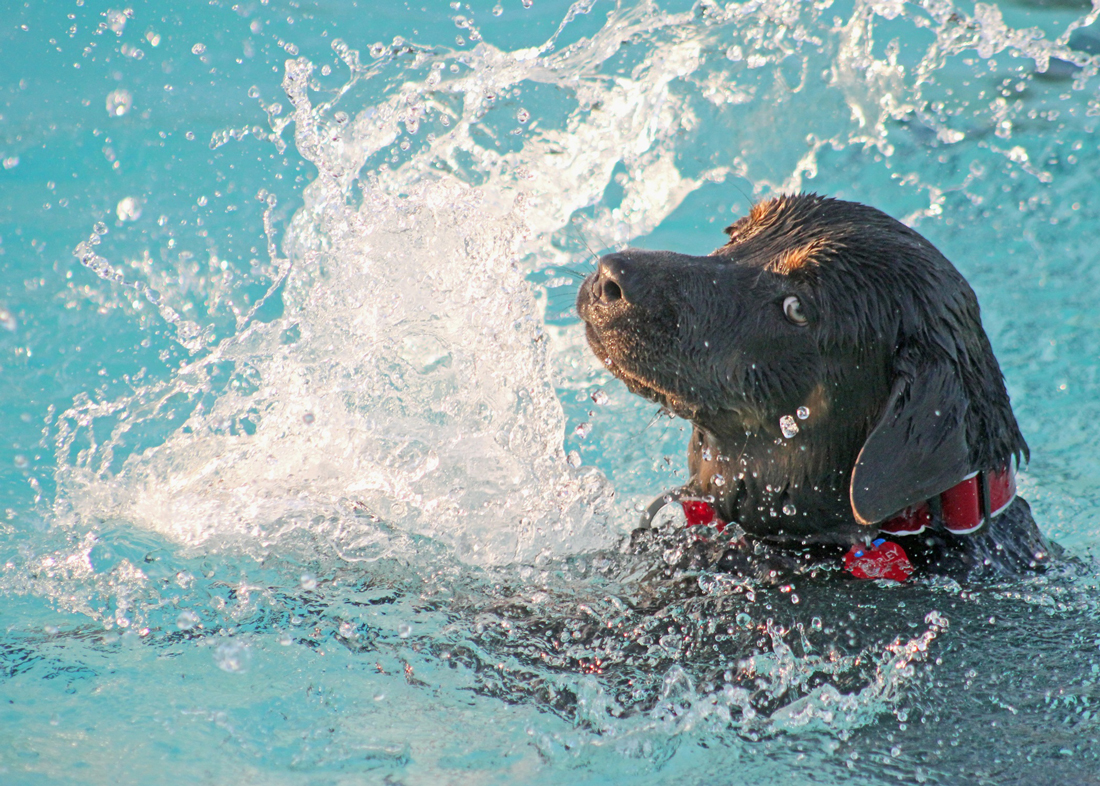
Water safety on board boats
If you’re someone who enjoys boating, you might like to set sail with your pet from time to time. And why not?
As long as your pet has had the chance to get used to life on a boat before you embark, there should be no problem.
One thing to bear in mind is the possibility that your pet may experience motion sickness once the boat starts moving.
They may also feel quite anxious or nervous the first time they set sail. And there is a chance the sound of the motor could scare your pet.
However, these are generally all things that can be overcome with practice. Once they’re used to the sounds and sensations aboard a boat, you’ll have a sailing pal for life!
Always follow the same safety rules for a pet on board a boat as you would a human.
Getting a pet life jacket is advised, in case your pet jumps or falls overboard. And keep any fishing tackle or other objects that could cause your pet harm safely stowed away and out of their reach.
Another thing to consider is making sure your pet has access to enough shade and fresh water when the weather is hot.
And if you and your mutt decide to make a habit of these boating trips, you should also look into pet sunscreen and/or eye protection.
Taking care near swimming pools
If you’re lucky enough to have a swimming pool, then you may be concerned about the effects chlorine can have on a pet. If your dog or cat are near a pool, there’s a chance they could decide to drink the pool water.
Pools contain quite small amounts of chlorine, so drinking the water is not too much of a worry. However, if a pet accidentally ingests a large volume of water, they could experience an upset stomach.
While this isn’t the most terrible side effect, it’s worth discouraging your dog or cat from drinking too much pool water.
Make sure there is plenty of fresh water near the pool so they don’t feel the need to drink the chlorinated water.
If your dog fancies a dip in the pool, make sure they know how to get out and keep tabs on how long they stay in the water.
Pets can sometimes develop itchy skin, red eyes or ear infections if they are in a swimming pool for too long.
Always hose down your dog or give them a bath with fresh water after they’ve been in a pool to get rid of the chlorine and avoid irritation.
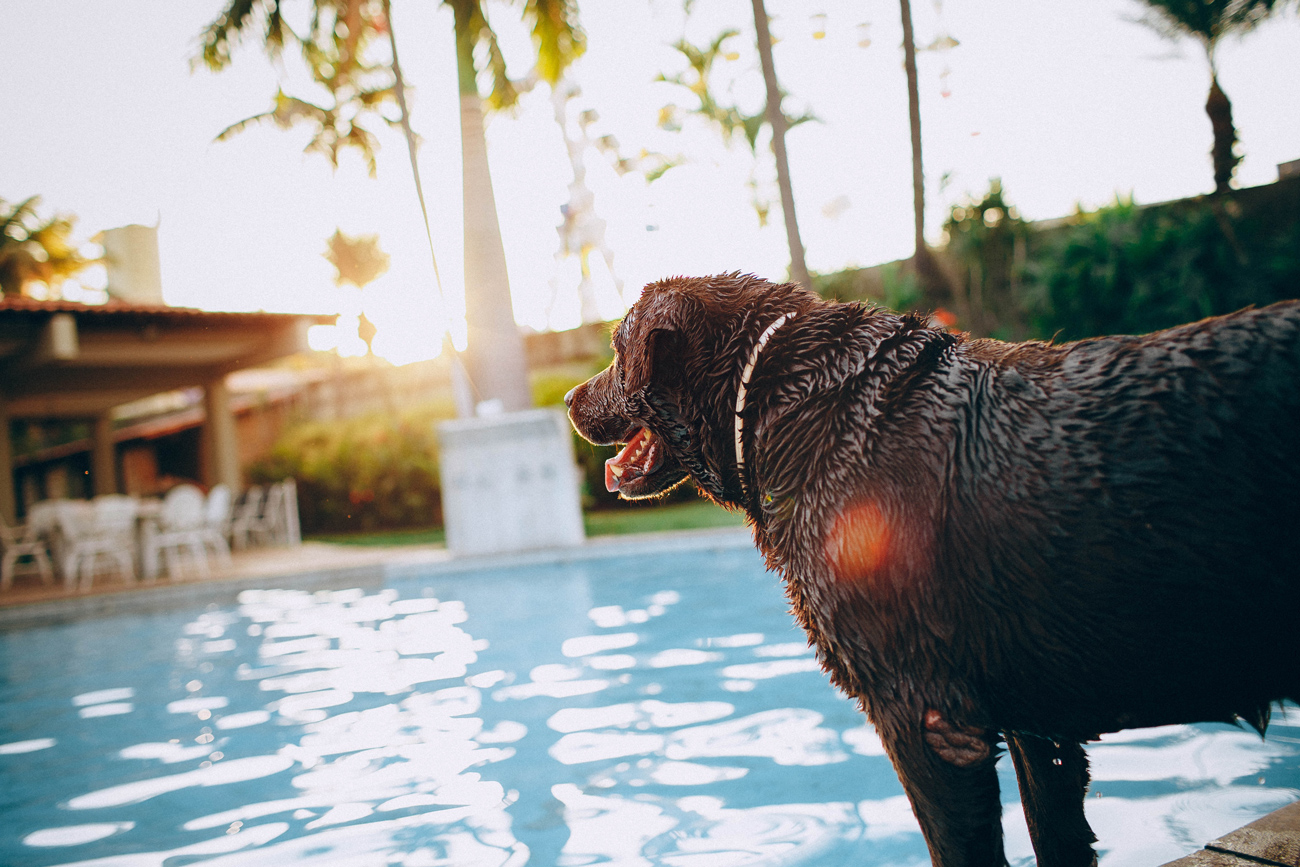
Can my pet get ill from swimming?
You may have heard tales of dogs getting seriously ill or even dying after swimming in open water.
This doesn’t happen that often, but it’s wise not to become complacent. The three best things you can do is always pick a good swimming spot, make sure your pet is up to date with their vaccinations and invest in pet cover.
Toxic blue-green algae should be avoided at all costs. This algae grows in stagnant water and (as the name suggests) has a bluey-green sheen.
It is highly toxic to dogs and even swallowing just a small amount can make them seriously ill.
If you are worried your dog has swum in water containing blue-green algae, make sure they do not lick their fur and get them to a vet as soon as you can.
Stagnant water can also be contaminated with leptospirosis – a bacteria usually transmitted through rats’ urine.
Again, the ways your pet could become infected are by drinking contaminated water or licking their fur after swimming.
Once the bacteria is in their system, it quickly travels to the kidneys and liver causing serious harm – and even death.
Younger pups (aged six months or less) tend to be more seriously affected by leptospirosis than older dogs.
Whenever your pet has been for a paddle, give them a good wash down once you get home. This will clear their fur of any residue from the water and keep them looking and feeling healthy.
Protect your pet with Purely Pets
You want your pet to have fun and explore the world around them – but you also want them to stay safe. Vet bills can quickly add up when a pet falls ill or gets injured, so it’s best to be prepared.
With pet insurance from Purely Pets you can give your dog or cat the protection they need at a level of cover to suit your budget.
Vets’ fees can be covered from between £1,000 and £15,000 per year, depending on the cover you choose.
With 15 levels of lifetime cover on offer, you can invest in pet insurance based on your budget and your pet’s needs.
As well as our award-winning pet insurance, you can access our 24-Hour Vet Helpline, make claims online, and speak to our knowledgeable team for advice.
Helpful Pages
Recent Posts
Pet Insurance Quote
- 98% claims paid *
- Claims paid directly to vets
- 24/7 vet video consultations
- Interest free monthly payments




